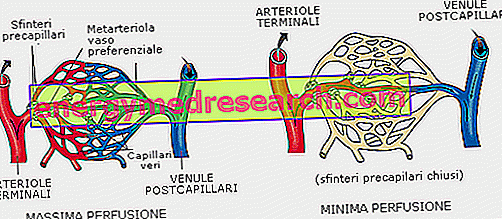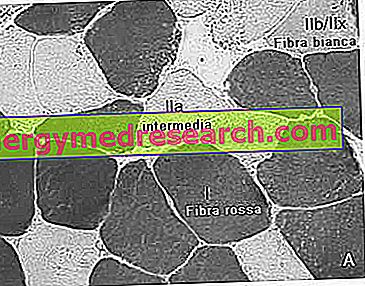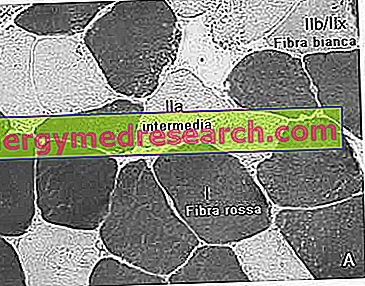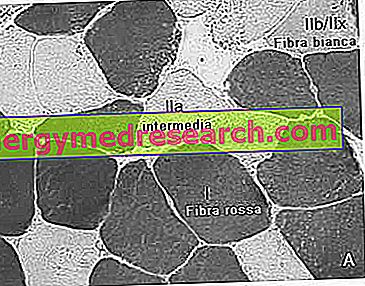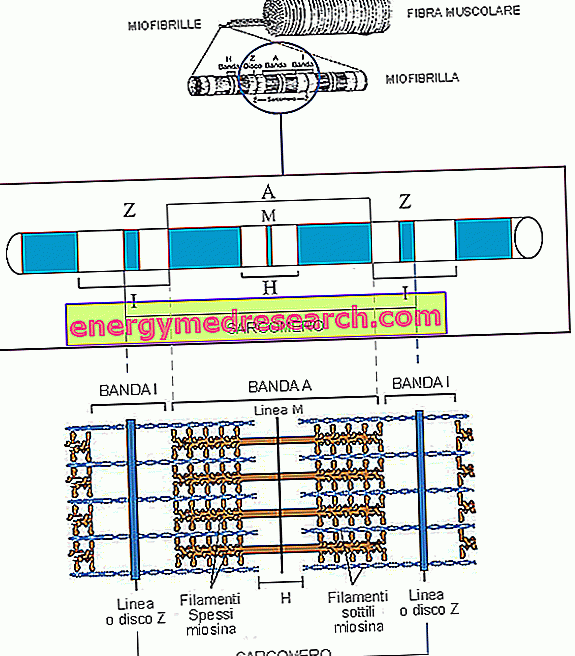Blood capillaries are responsible for metabolic exchanges between blood and interstitial fluid (a fluid that surrounds the cells). These small vessels have extremely thin walls that allow the continuous passage, in both directions, of gases, nutrients and metabolites. In order for these exchanges to take place it is important that the blood stream travels them at low speed and that its pressure, which is not excessive, remains within rather narrow ranges
Category physiology
Triglycerides are hydrolyzed in the intestine thanks to the intervention of pancreatic lipase. Once hydrolysed to glycerol and free fatty acids, they can be absorbed by the cells of the intestinal epithelium, which reconvert the glycerol and fatty acids into triglycerides. The triglycerides are then released into the lymphatic circulation, associated with particular lipoprotein particles called chylomicrons
Muscular catabolism is a phenomenon mainly induced: from malnutrition (as happens in the Third World or in case of eating disorders - DCA) alcoholism from some chronic diseases from sporting practice NOT correctly supported by the power supply. NB . the presence of over-training can also contribute. In some EXCESSIVELY protracted and / or intense sporting performances (marathon, march, triathlon-iron man, cycling tour, etc
Red fibers vs white fibers In physiology the distinction between white and red fibers derives from the correlation between the color of the muscle cell and its speed of contraction. The "white muscles" (or better, clear) are mainly glycolytic (anaerobic glycolysis energy metabolism), therefore faster but less resistant than the red ones; vice versa, the red muscles are more "efficient" (less strength and greater economy in effort) but, from the energetic point of view, less "effective" in the contraction
Red fibers VS white fibers The differentiation between white fibers and red fibers is the result of the association between the color of the muscle and the respective speed of contraction; the "red muscles" are mainly slow but resistant, while the "light muscles" are more "effective" (greater strength and speed of contraction) but less "efficient" from the energy point of view (less autonomy during the effort)
The intermediate muscle fibers are polymers of muscle cells that, thanks to their characteristic adaptability to the effort, can be specialized acquiring more aerobic (oxidative) or anaerobic (anaerobic glycolysis and creatine kinase) metabolic characteristics. Specializing intermediate muscle fibers means orienting the training stimulus based on the results to be obtained; taking into consideration training with overloads, specialization can evolve: in the oxidative direction increasing the duration and reducing the intensity in glycolytic-anaerobic direction increasing the intensity and reduc
Skeletal muscle fibers associate with one another in motor units; this structuring is fundamental to increase the "control" of the muscle shortening otherwise limited to the level of the single fibrocells. What is motor unity? Muscles are innervated by pools (families) of motor neurons; comparing the number of nerve cells to that of muscle fibrocells, it turns out that the motor neurons are far inferior to the fibers to be stimulated
By Dr. Nicola Sacchi - Author of the book: Drugs and doping in sport - Cortisol is also called the stress hormone, as it is produced by the body under stress conditions, recognized by the body as a disorder of homeostasis (cellular balance with the environment). Any event capable of disturbing cellular or organic homeostasis is considered by the body as a stressing agent
Edited by Antonio Rubbino Leptin: the "master regulator" A Kennedy study of about 55 years ago put forward the hypothesis that there was a hormone secreted by fat cells that communicated to the hypothalamus the energetic state of the organism. The idea of the existence of this hormone (or better "cytokine"), called leptin, was later confirmed by subsequent studies i Leptin (from the Greek "leptos", "lean") is a cytokine produced and released by fat cells. Th
It is the maximum oxygen consumption that a subject presents in the course of rhythmic, protracted and intense muscular activity, which engages large muscle masses (usually the lower limbs), breathing air, at sea level. In practice it is the maximum quantity of O2 that can be captured - transported - used by the body and represents the ability of an individual to produce and use energy, generated by the aerobic oxidative system
By Dr. Dario Mirra Skeletal muscle: outline of functional anatomy The muscle is composed of different elements that form its structure. The different functional units of the striated muscle are called sarcomeres or inocommates, real functional units of movement. To have a clear idea of the way in which the muscle creates movement, and having already the biochemical, physiological and neurological function underlying the muscle contraction, it is necessary to have two clear concepts: the constitution of the protein mesh that underlies the functions of the muscle itself; the physical relationsh

